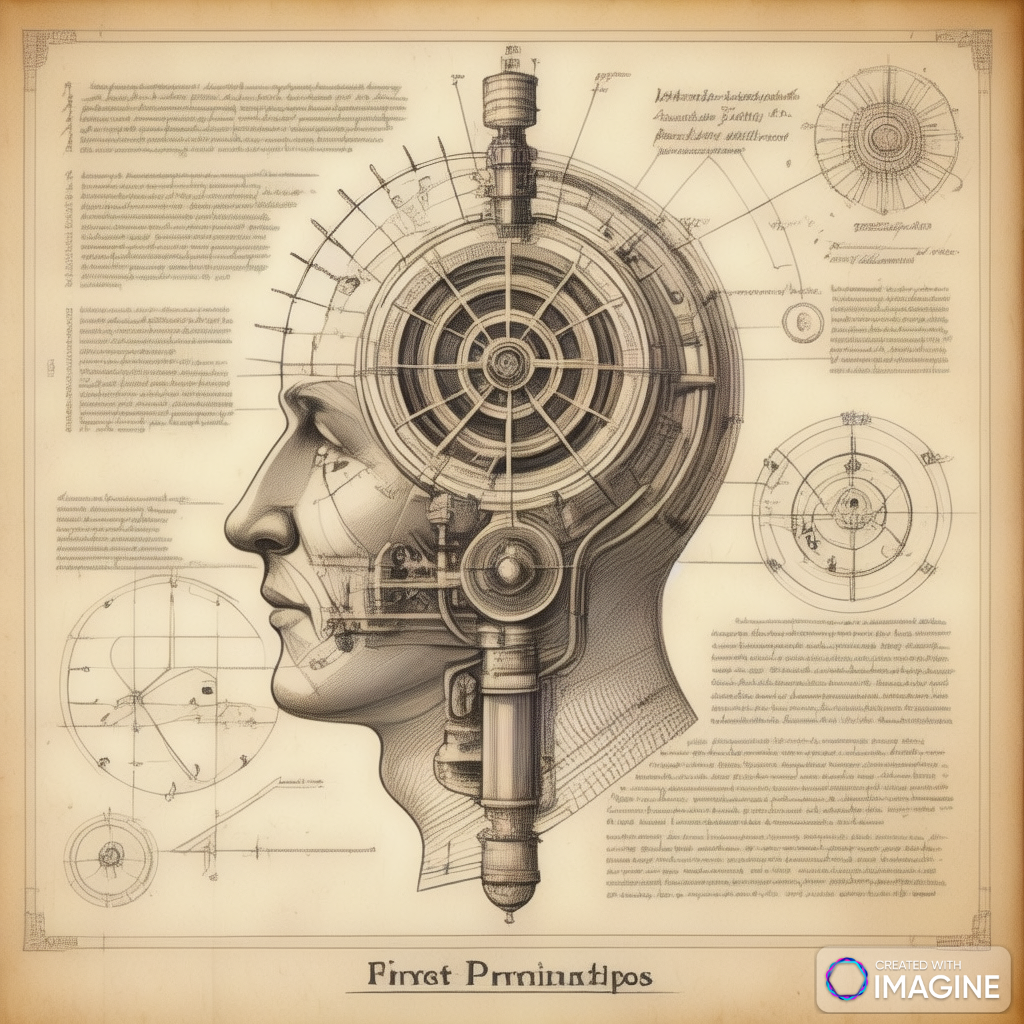Understanding Sensory Processing: How the Brain Interprets Information
Introduction
The human brain is an intricate organ with remarkable capabilities. It processes vast amounts of sensory information, which includes visual, auditory, tactile, olfactory, and gustatory stimuli. However, the efficiency with which individuals process and comprehend sensory information can vary widely. This blog post explores the detailed steps of sensory processing, how the brain interprets information, and the factors that affect this process.
1. Sensory Input: From External Stimuli to Sensory Organs
Sensory processing begins when external stimuli interact with our sensory organs. Here’s a step-by-step breakdown:
- Visual Information: Light enters the eyes through the cornea, passes through the lens, and reaches the retina at the back of the eye. The retina contains photoreceptors (rods and cones) that convert light into electrical signals.
- Auditory Information: Sound waves enter the ear through the outer ear, travel through the ear canal, and vibrate the eardrum. These vibrations are transmitted through the ossicles (tiny bones in the middle ear) to the cochlea in the inner ear, where they are converted into electrical signals.
- Tactile Information: Touch stimuli are detected by receptors in the skin, such as mechanoreceptors, which respond to pressure, vibration, and texture.
- Olfactory Information: Odor molecules are detected by olfactory receptors in the nasal cavity, which send signals to the olfactory bulb in the brain.
- Gustatory Information: Taste buds on the tongue detect different flavors (sweet, salty, sour, bitter, and umami) and send signals to the brain.
2. Transmission of Sensory Signals
Once sensory receptors detect stimuli, they convert them into electrical signals, which are transmitted via sensory neurons to various parts of the brain. This transmission involves several key steps:
- Signal Encoding: Sensory receptors encode information about the stimulus, such as its intensity and quality.
- Signal Transmission: Electrical signals travel along sensory neurons to the brain. For visual information, this means traveling through the optic nerve; for auditory information, through the auditory nerve, and so on.
- Signal Processing: The signals reach specific areas in the brain that are specialized for processing different types of sensory information. For example, the occipital lobe processes visual information, while the temporal lobe is involved in auditory processing.
3. Brain Processing: From Sensory Input to Perception
Once the sensory signals reach the brain, they undergo complex processing:
- Primary Sensory Areas: Initial processing occurs in primary sensory cortices (e.g., visual cortex for sight, auditory cortex for sound). These areas are responsible for basic processing of sensory attributes.
- Association Areas: Information is then sent to association areas, which integrate sensory inputs with existing knowledge and context. This integration helps in forming a cohesive perception.
- Higher-Order Processing: The brain’s higher-order processing areas, such as the prefrontal cortex, are involved in more complex tasks like decision-making, problem-solving, and emotional responses.
- Attention and Awareness: Attention mechanisms play a crucial role in focusing on relevant stimuli while filtering out distractions. This helps in processing important details and integrating them into our conscious experience.
4. Speed and Efficiency: Why Some Process Faster Than Others
The speed and efficiency of sensory processing can vary among individuals due to several factors:
- Neural Efficiency: Some individuals have highly efficient neural networks that allow for faster processing and integration of sensory information.
- Experience and Training: Experience and training can enhance sensory processing abilities. For instance, experts in certain fields may develop enhanced sensory discrimination skills through practice.
- Genetic Factors: Genetic variations can influence the structure and function of sensory processing areas in the brain.
5. Emotional and Biological Influences
Emotions and biological processes can significantly impact sensory processing:
- Emotional States: Strong emotions can affect attention and perception, sometimes leading to heightened sensitivity or reduced ability to process details accurately.
- Neurochemical Processes: Neurotransmitters and hormones play a role in modulating sensory processing. Imbalances in these chemicals can affect perception and cognitive function.
- Cognitive Load: The brain’s ability to process sensory information can be influenced by cognitive load and fatigue. Overloading the brain with information can impair its efficiency in processing sensory input.
6. Practical Implications and Conclusion
Understanding sensory processing and its variability can help in various fields, including education, mental health, and design:
- Education: Tailoring learning environments to accommodate different processing speeds and styles can enhance educational outcomes.
- Mental Health: Recognizing the impact of emotional and neurochemical factors on sensory processing can improve mental health interventions.
- Design: Designing products and environments with an understanding of sensory processing can create more user-friendly and accessible experiences.
In-Depth Exploration of Sensory Processing: A Multidimensional Perspective
Introduction
The human brain’s ability to process sensory information is a marvel of nature, but this ability is not uniform across individuals. The speed, accuracy, and depth of sensory processing can vary widely due to a multitude of factors, including neuroscience, evolution, genetics, neurobiology, age, environment, and more. In this detailed exploration, we’ll delve into these factors and how they shape our sensory experiences.
1. The Role of Evolution in Sensory Processing
- Adaptive Mechanisms: Evolution has honed our sensory systems to enhance survival. For example, early humans with superior visual acuity and faster response times to auditory cues were better equipped to avoid predators and find food. These adaptive mechanisms have been passed down through generations, shaping our current sensory capabilities.
- Specialized Sensory Abilities: Different species, including humans, have evolved sensory systems optimized for their environments. For example, birds of prey have extraordinary vision, while humans have evolved to have a balanced set of sensory capabilities, with an emphasis on visual and auditory processing.
- Evolutionary Trade-Offs: The evolution of complex sensory systems involved trade-offs. For example, while humans have excellent color vision, our sense of smell is less acute compared to other animals. These trade-offs reflect the environmental demands placed on our ancestors.
2. Genetic Influences on Sensory Processing
- Genetic Variability: Genetic differences contribute significantly to the variability in sensory processing among individuals. Genes influence the development and function of sensory organs, neural pathways, and brain regions involved in processing sensory information.
- Heritability of Sensory Abilities: Certain sensory abilities, such as visual acuity, have a high degree of heritability. Studies have shown that genetic factors account for a significant portion of the variation in sensory processing abilities, with twin studies providing evidence of the genetic basis of these traits.
- Genetic Disorders: Mutations in specific genes can lead to sensory processing disorders, such as color blindness or congenital deafness. Understanding these genetic underpinnings can lead to better diagnosis and treatment of sensory impairments.
3. Neurobiology and Brain Structure
- Neural Plasticity: The brain’s ability to adapt and reorganize itself, known as neural plasticity, plays a crucial role in sensory processing. Neural plasticity allows the brain to strengthen connections in response to sensory experiences, leading to improved processing abilities over time.
- Cortical Representation: The sensory cortices in the brain, such as the visual cortex and auditory cortex, have specialized regions that process specific aspects of sensory information. The size and connectivity of these regions can vary between individuals, influencing their sensory processing capabilities.
- Synaptic Efficiency: The efficiency of synaptic transmission—the process by which neurons communicate—affects how quickly and accurately sensory information is processed. Synaptic efficiency is influenced by factors such as neurotransmitter levels, receptor sensitivity, and the density of synapses in sensory regions of the brain.
4. The Impact of Age on Sensory Processing
- Developmental Stages: Sensory processing abilities change throughout the lifespan. During childhood, the brain undergoes significant development, leading to rapid improvements in sensory processing. Adolescents and young adults often experience peak sensory processing abilities.
- Aging and Sensory Decline: As individuals age, there is a natural decline in sensory processing abilities due to factors such as neural degeneration, reduced plasticity, and slower synaptic transmission. Age-related changes in sensory organs, such as the lens of the eye becoming less flexible, also contribute to this decline.
- Neuroprotective Strategies: Engaging in activities that stimulate sensory processing, such as puzzles or learning new skills, can help mitigate age-related declines by promoting neural plasticity and maintaining the health of sensory pathways.
5. The Influence of Habits and Experience
- Sensory Training: Regular exposure to sensory-rich environments can enhance sensory processing abilities. For example, musicians often develop heightened auditory discrimination, while artists may have superior visual acuity and color differentiation.
- Habituation and Sensory Adaptation: Repeated exposure to the same stimuli can lead to habituation, where the brain becomes less responsive to familiar stimuli. Conversely, novel or intense stimuli can enhance sensory processing by engaging different neural pathways.
- Multisensory Integration: Habits that involve the integration of multiple senses, such as cooking or playing a musical instrument, can improve the brain’s ability to process and coordinate sensory information from different modalities.
6. Environmental Factors and Upbringing
- Enriched Environments: Growing up in an environment rich in sensory stimuli—such as exposure to diverse sounds, sights, and textures—can enhance sensory processing abilities. Children raised in such environments often develop better perceptual and cognitive skills.
- Deprivation and Sensory Processing: On the other hand, sensory deprivation or lack of stimulation during critical developmental periods can lead to deficits in sensory processing. For example, children raised in impoverished environments may have underdeveloped sensory systems.
- Cultural Influences: Cultural factors also play a role in shaping sensory processing. Different cultures emphasize different sensory modalities (e.g., visual art in Western cultures, auditory art in African cultures), leading to variations in how individuals from different backgrounds process sensory information.
7. The Role of Neurochemistry and Emotions
- Neurotransmitters and Sensory Processing: Neurotransmitters such as dopamine, serotonin, and acetylcholine play critical roles in modulating sensory processing. For example, dopamine is involved in reward-based learning and attention, which are essential for processing and prioritizing sensory information.
- Stress and Sensory Processing: Stress and anxiety can impair sensory processing by overloading the brain’s attention systems and disrupting neural communication. Chronic stress can lead to long-term changes in brain structure and function, negatively impacting sensory processing.
- Emotional States: Emotions can either enhance or impair sensory processing. Positive emotions, such as excitement, can heighten sensory awareness, while negative emotions, such as fear or sadness, can narrow attention and reduce the brain’s ability to process sensory information effectively.
8. Biological Rhythms and Sensory Processing
- Circadian Rhythms: The body’s internal clock, or circadian rhythm, influences sensory processing abilities. For example, visual acuity and reaction times tend to be better during the day when the body is naturally more alert, while sensory processing may be less efficient during the night.
- Sleep and Sensory Processing: Adequate sleep is crucial for maintaining optimal sensory processing abilities. During sleep, the brain consolidates sensory memories and strengthens neural connections, leading to improved sensory discrimination and processing speed.
- Hormonal Fluctuations: Hormonal changes, such as those associated with puberty, pregnancy, or menopause, can affect sensory processing. For example, fluctuations in estrogen levels can influence pain perception and auditory sensitivity.
9. Scientific Evidence and Research Insights
- Neuroscientific Studies: Advanced imaging techniques, such as fMRI and EEG, have provided insights into how the brain processes sensory information. These studies have shown that different sensory modalities are processed in parallel, with the brain integrating information from multiple sources to create a cohesive perception.
- Cognitive Neuroscience: Research in cognitive neuroscience has revealed that sensory processing is not just about detecting stimuli but also about interpreting and responding to them. The brain’s ability to predict and anticipate sensory events plays a crucial role in processing efficiency.
- Behavioral Studies: Behavioral experiments have shown that individuals with superior sensory processing abilities often perform better in tasks that require quick decision-making, such as sports or high-stakes professions. These studies highlight the practical implications of sensory processing in everyday life.
10. The Impact of Upbringing and Education
- Parental Influence: Parents and caregivers play a critical role in shaping sensory processing abilities through early interactions and stimulation. Activities such as reading, playing, and exploring the environment can enhance a child’s sensory development.
- Educational Systems: Educational approaches that emphasize hands-on learning, sensory exploration, and creative expression can foster better sensory processing abilities. Montessori and Waldorf education systems, for example, focus on sensory-rich learning experiences.
- Socioeconomic Factors: Socioeconomic status can influence sensory processing through access to resources, such as nutritious food, healthcare, and enriching experiences. Children from higher socioeconomic backgrounds may have more opportunities to develop their sensory processing skills.
Enhancing Sensory Processing Abilities: Strategies for Lasting Improvement
Improving sensory processing abilities is not just about temporary boosts; it’s about making lasting changes that enhance how we perceive and interpret the world around us. These changes can occur regardless of age, genetics, geography, past habits, or environment. Here are several strategies that can help individuals enhance their sensory processing abilities permanently:
1. Neuroplasticity and Cognitive Training
- Targeted Cognitive Exercises: Engaging in activities that specifically target sensory processing can strengthen neural connections and improve the brain’s ability to process sensory information. For example, brain-training apps, puzzles, and games that challenge visual or auditory discrimination can lead to lasting improvements.
- Mindfulness and Meditation: Mindfulness practices, including meditation, can enhance sensory awareness and focus by training the brain to pay attention to the present moment. Regular meditation has been shown to increase the thickness of the cerebral cortex, which can lead to enhanced sensory processing over time.
- Cross-Modal Training: Engaging in activities that require the integration of multiple sensory modalities, such as playing a musical instrument, dancing, or cooking, can improve the brain’s ability to process and coordinate sensory information. This cross-modal training enhances overall sensory acuity and responsiveness.
2. Lifestyle and Environmental Enrichment
- Sensory-Rich Environments: Surrounding oneself with a variety of sensory stimuli can enhance sensory processing abilities. This can include spending time in nature, visiting art galleries, attending concerts, or even simply decorating your living space with diverse textures, colors, and sounds.
- Regular Physical Activity: Exercise has been shown to enhance neurogenesis (the growth of new neurons) and improve synaptic plasticity, both of which are crucial for sensory processing. Activities that involve coordination and balance, such as yoga, tai chi, or dance, are particularly effective in enhancing sensory-motor integration.
- Balanced Diet and Nutrition: Consuming a diet rich in omega-3 fatty acids, antioxidants, and essential vitamins and minerals can support brain health and improve sensory processing. Nutrients like DHA (found in fish oil) are particularly important for maintaining the health of sensory neurons and synapses.
3. Learning and Skill Development
- Continuous Learning: Engaging in lifelong learning activities that challenge the senses, such as learning a new language, painting, or playing an instrument, can keep the brain active and improve sensory processing abilities. These activities stimulate the brain’s sensory regions and promote the formation of new neural connections.
- Practice and Repetition: Consistent practice of sensory tasks can lead to long-term improvements in sensory processing. For example, regularly practicing observation skills by focusing on details in the environment or practicing active listening can enhance the brain’s ability to process visual and auditory information.
- Sensory Mindfulness Exercises: Regularly practicing exercises that heighten sensory awareness, such as paying close attention to the textures, colors, and sounds in your environment, can sharpen sensory processing over time. Techniques such as sensory meditation or mindful walking are effective in this regard.
4. Neurofeedback and Biofeedback
- Neurofeedback Training: Neurofeedback is a technique that involves monitoring brain activity and providing real-time feedback to the individual. This training can be used to enhance specific sensory processing abilities by helping the brain learn to function more efficiently.
- Biofeedback for Sensory Processing: Biofeedback techniques that monitor physiological responses, such as heart rate, skin conductance, and muscle tension, can be used to train individuals to improve their sensory processing abilities by helping them regulate their bodily responses to sensory stimuli.
5. Sleep and Recovery Optimization
- Improving Sleep Quality: Prioritizing high-quality sleep is essential for maintaining and improving sensory processing abilities. Sleep is when the brain consolidates sensory memories and strengthens neural pathways. Strategies such as maintaining a consistent sleep schedule, creating a restful sleep environment, and practicing good sleep hygiene can lead to long-term improvements.
- Recovery and Rest: Allowing adequate time for recovery after intense sensory experiences or cognitive tasks is crucial. Practices like deep relaxation, napping, and spending time in low-stimulus environments can help the brain process and integrate sensory information more effectively.
6. Adaptive Technologies and Tools
- Use of Assistive Technology: For individuals with sensory processing difficulties, adaptive technologies such as hearing aids, visual aids, or sensory integration tools can provide immediate support. Over time, the use of these tools can lead to permanent improvements in sensory processing by facilitating better sensory input.
- Sensory Integration Therapy: Sensory integration therapy, often used for individuals with sensory processing disorders, involves engaging in activities that challenge the sensory systems in a structured way. This therapy can lead to lasting improvements in how the brain processes sensory information.
7. Cultivating a Growth Mindset
- Adopting a Growth Mindset: Believing that sensory processing abilities can be improved through effort and practice is crucial. A growth mindset encourages individuals to engage in activities that challenge their senses and to persist in the face of difficulties. Over time, this mindset leads to tangible improvements.
- Setting Sensory Goals: Just as one sets physical or cognitive goals, setting specific goals related to sensory processing (e.g., improving auditory discrimination, enhancing visual detail recognition) can provide motivation and direction for ongoing practice and improvement.
8. Addressing Emotional and Psychological Barriers
- Managing Stress and Anxiety: Chronic stress and anxiety can impair sensory processing by overloading the brain’s attention and working memory systems. Techniques such as cognitive-behavioral therapy (CBT), stress management, and relaxation exercises can reduce these barriers and improve sensory processing over time.
- Building Emotional Resilience: Developing emotional resilience through practices such as mindfulness, journaling, or therapy can help individuals better cope with emotional responses that might interfere with sensory processing. Over time, this leads to a more stable and effective sensory processing system.
9. Social Interaction and Communication
- Enhancing Social Interaction: Regular social interaction and communication can stimulate sensory processing, particularly in the auditory and visual domains. Engaging in conversations, participating in group activities, and practicing active listening are effective ways to improve these abilities.
- Role of Community and Support: Being part of a supportive community that values sensory exploration and learning can provide motivation and opportunities for sensory growth. Group activities such as art classes, music groups, or nature walks can enhance sensory processing through shared experiences.
10. Personalized and Adaptive Strategies
- Individualized Sensory Training Plans: Since sensory processing abilities vary widely, creating a personalized sensory training plan that targets specific areas for improvement can be highly effective. This plan should be based on individual strengths, weaknesses, and goals.
- Monitoring Progress and Adjusting Strategies: Regularly assessing progress in sensory processing abilities allows for the adjustment of strategies as needed. Using journals, tracking tools, or even professional assessments can help individuals stay on track and make continuous improvements.
Conclusion
Improving sensory processing abilities is a lifelong journey that involves a combination of cognitive training, lifestyle changes, skill development, and mindset shifts. By adopting these strategies, individuals can make permanent improvements in how they perceive, process, and respond to sensory information, regardless of their age, genetics, or past experiences. These enhancements not only improve sensory acuity but also enrich the overall quality of life, enabling individuals to engage more fully with the world around them.
Conclusion
Sensory processing is a complex and multifaceted process influenced by a wide range of factors, including genetics, neurobiology, evolution, environment, habits, and emotions. Understanding the diverse influences on sensory processing can provide insights into why some individuals excel in this area while others may struggle. By recognizing and addressing the factors that impact sensory processing, we can create environments and interventions that support optimal sensory functioning for all individuals.
In conclusion, sensory processing is a complex and dynamic process involving multiple stages from initial stimulus detection to higher-order cognitive functions. While some individuals may process sensory information more quickly and efficiently, understanding the underlying mechanisms can provide insights into improving sensory experiences and addressing processing challenges.







